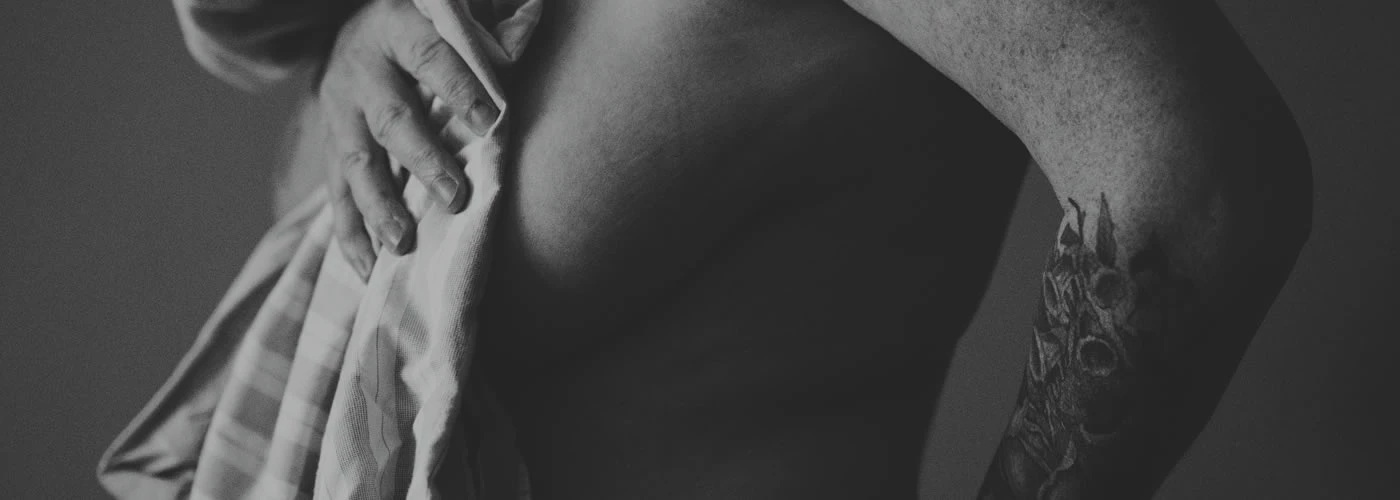Breast cancer and breast cancer treatment may come with a host of surprises. Weight gain. Weight loss. Emotional highs and lows. Supportive friends. Unsupportive friends.
But what many young survivors don’t know is they may also be getting a brand new tattoo. Are you picturing something like a powerful symbol of your breast cancer journey or something beautiful that feels positive and uplifting? What we’re actually talking about is no larger than a pinpoint and resembles a dot of ink.
Tattooing in Radiation Therapy
Tattooing has been a common step in the process of radiation therapy (RT) for years. If you are receiving RT as part of your treatment, your RT team will want to know exactly where on your breast to treat. Small tattoos can provide alignment to the affected area. They may be used as a guide at each one of your RT visits. On average, patients receive three to four markings.
For some individuals, the radiation tattoos do not leave a significant impact. The needle itself can feel like a needle prick or bee sting. And, in the long term, patients may not notice or be bothered by the permanent marking. Some even see it as a reminder of their strength through breast cancer diagnosis and treatment.
Safer Radiation Therapy
Learn more about radiation therapy and how young adults affected by breast cancer can continue to increase their knowledge and decision making power.
Learn More
For others, however, the markings can cause emotional distress and issues of body image. While more research is needed, some patients report negative feelings about their RT tattoos. Among other emotions, they experience a loss of control and additional changes to their body during an already stressful time, in addition to resentment that the tattoos are a permanent reminder of the experience. A forthcoming survey suggests that many women may share these views.
Save the Tattoo for One You Want
The good news is that there are new techniques that eliminate the need for radiation tattoos. Additionally, they may decrease other long-term effects of RT, such as heart damage. Many providers are now using Surface Guided Radiation Therapy (SGRT). SGRT allows more precise targeting of the radiation beam and can ensure the beam stops if you happen to move from your optimal treatment position. For left-breast radiation, deep inspiration breath-hold (DIBH) is added to this. When you take a deep breath, your heart moves down, away from your left breast, so the radiation beam is further from the heart. This combination of SGRT and DIBH has been shown in studies to reduce patients’ heart damage after radiation.
Young Survival Coalition had the pleasure of creating an educational video on “Understanding and Minimizing the Impact of RT” with experts Dr. Nancy Wiggers and Ellen Herron, BSRT(T) from the Northside Hospital Cancer Institute in Atlanta, GA. In it, they explain some short and long-term effects of RT. They also discuss new advances in decreasing physical repercussions.
“One of the bonuses of (SGRT),” says Herron during the video, is that “patients don't have the anxiety of (the tattoos) being a constant reminder of what they are going through.”
In speaking about the importance of decreased exposure to the heart, Dr. Wiggers adds:
“Twenty years after radiation to the left side, we found increased risk of coronary artery disease (in left-breast RT patients). DIBH is a way to remove that side effect. Especially when you treat a lot of young people, you don’t want to add another long-term side effect to their lives.”
Alternatives to Radiation Tattoos
SGRT and DIBH are becoming more widely used practices giving patients additional options and control over their RT treatment. The benefits are very appealing for those undergoing one or many breast cancer treatments. Including decreased heart exposure for patients undergoing left breast RT, as well as elimination of tattoo markings for all patients.
Vision RT is a radiation therapy technology company pioneering SGRT techniques through their AlignRT system. Visit safer radiation therapy https://www.saferradiationtherapy.com to learn more about their technology and how young adults affected by breast cancer can continue to increase knowledge and decision making power.
So maybe, after all is said and done, a few small dots will be your first tattoo. Or maybe you will decide to get one that reflects the journey of your breast cancer diagnosis and treatment at a time of your choosing. The most important takeaway is that there are new options every day in breast cancer treatment. These options allow young adults affected by breast cancer greater and greater power in their decision making.
Sincere thanks to Vision RT for their support in providing increased knowledge to young adults affected by breast cancer and for partnering on this blog. Their recognition of YSC Strong, National Women’s Health Week and the importance of empowering our community all year long is greatly appreciated.




